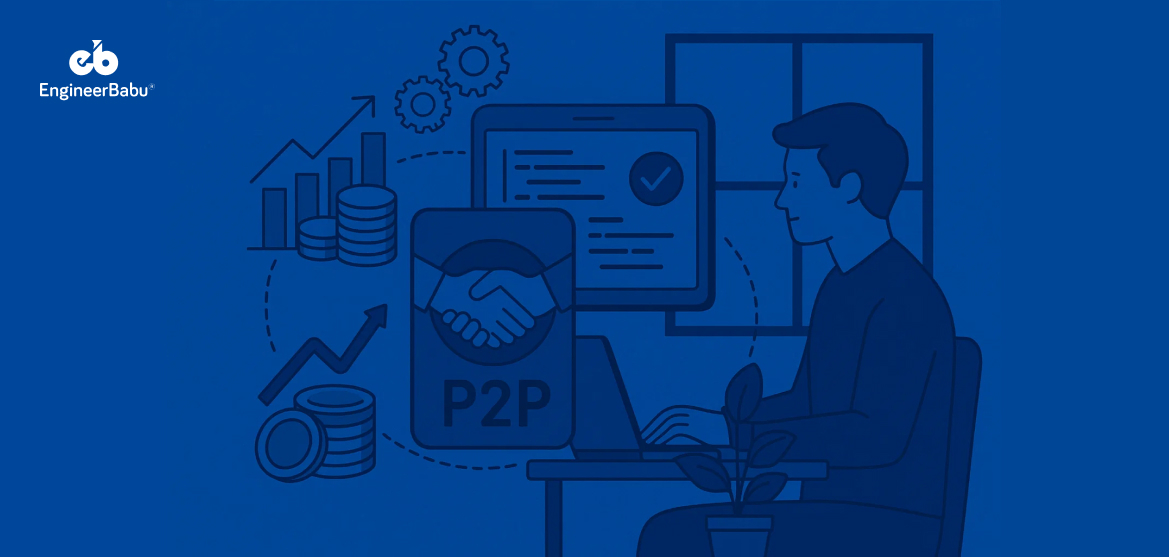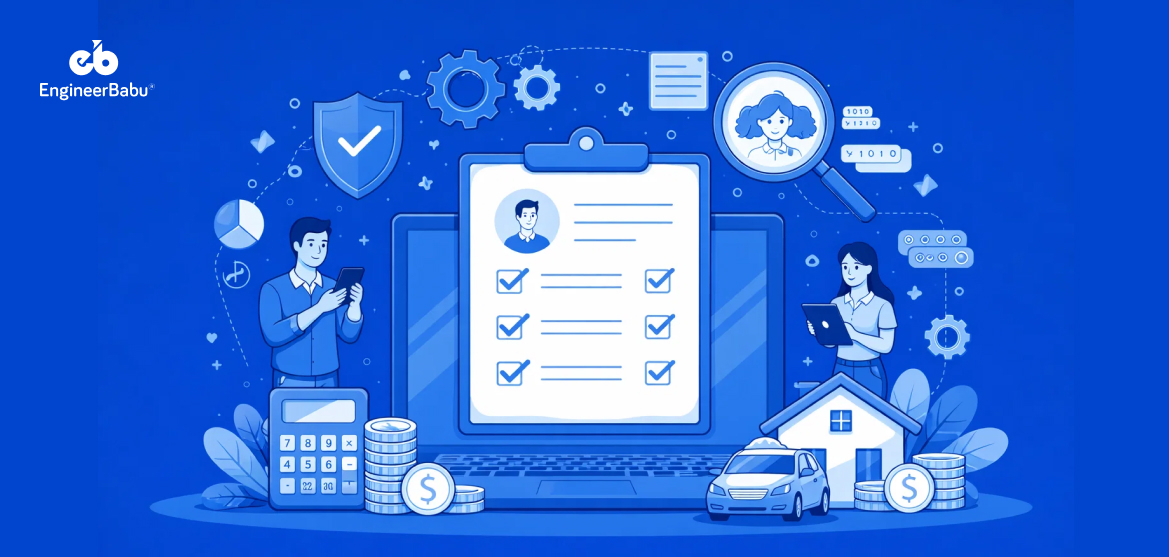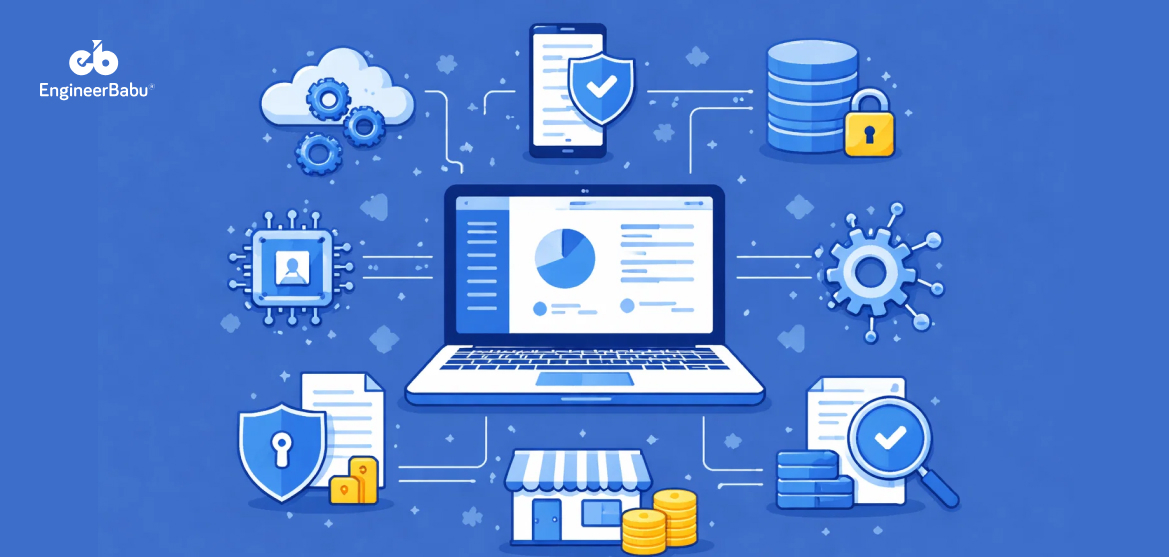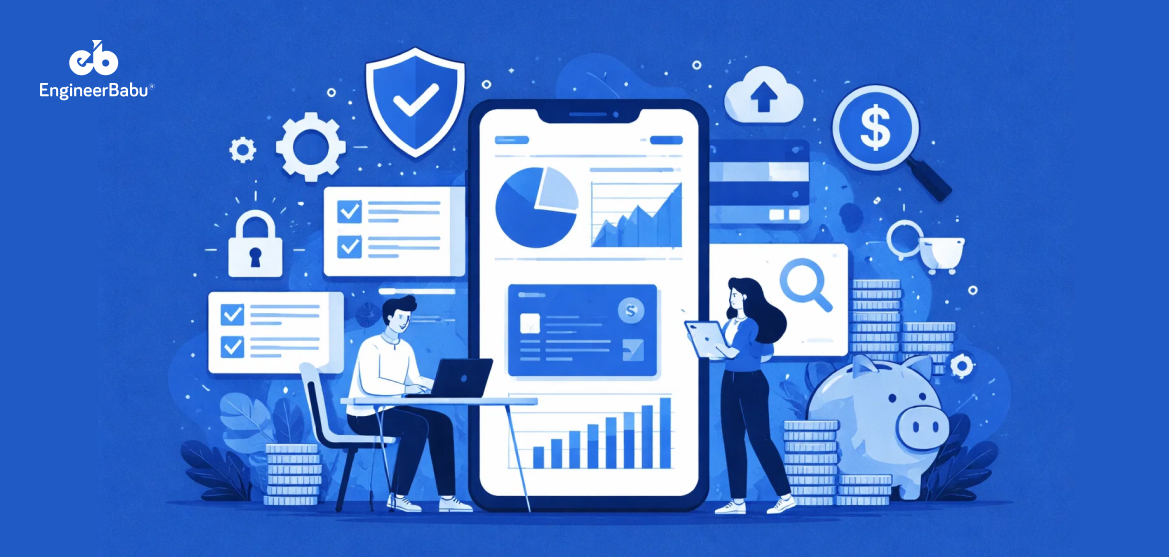Building a peer-to-peer lending platform is not just about writing code. It is about creating a digital bridge—a digital platform that facilitates connections between borrowers and lenders—where borrowers who need capital meet lenders who want better returns than a savings account can provide.
Done well, it opens the door to financial access for individuals and small businesses that traditional banks often overlook.
The idea has already proven its strength. According to Allied Market Research, the global P2P lending market is projected to reach $558.9 billion by 2027. That kind of growth shows why startups and established financial firms alike are investing in platforms that can handle lending at scale while keeping transactions secure and compliant.
So, if you are considering how to build a P2P lending platform, the opportunity is real, but so are the challenges. That is why this guide will walk through what it takes to design, develop, and launch your first successful P2P lending software.
Understanding P2P Lending Platforms
At its core, a peer-to-peer lending platform connects people who want to borrow money with those willing to lend money, without the involvement of a traditional bank. Borrowers initiate the process of borrowing money by creating a loan listing, while lenders review opportunities in the loan marketplace and decide where to invest.
The platform manages the process by handling applications, credit checks, fund transfers, and repayments. For borrowers, the appeal is often speed, accessibility, and more flexible terms compared to banks. For lenders, the draw is higher potential returns, though it comes with risk.
Therefore, understanding these dynamics is the first step in learning how to build a P2P lending platform that can balance convenience with security. Platforms that succeed typically offer clear value to both sides: fair loan terms for borrowers and trustworthy, risk-assessed investment opportunities for lenders.
Step-by-Step Process: How to Build a P2P Lending Platform
Before you dive into development, it helps to see the journey as a series of well-defined steps. Each stage moves you closer to a secure and scalable product, much like such platforms that play a crucial role in the fintech ecosystem by connecting borrowers and investors directly. From laying the foundation of your business model to launching a market-ready platform, understanding these steps is essential.
1. Define Your Business Model and Target Audience
The first decision is who your platform will serve and how it will generate revenue. Some platforms charge borrowers an origination fee, while others take a percentage of lender earnings. Choosing your model early ensures clarity when building features.
Peer-to-peer lending platforms typically operate under two main business models: the marketplace model and the balance-sheet model. In the marketplace model, the platform does not fund loans from its own balance sheet but instead facilitates funding through external investors, acting as an intermediary and not bearing credit risk. In contrast, balance-sheet platforms originate loans using their own balance sheet, directly funding loans and assuming full credit risk. Some platforms use a hybrid approach, combining both methods to fund loans. The choice of lending model—whether focused on consumer loans, business borrowers, microfinance, or other segments—directly impacts platform features, risk exposure, and compliance requirements. Serving different borrower segments, such as business borrowers, requires understanding their unique needs, which may differ significantly from those of individual borrowers.
Loan origination is a key process that connects borrowers and lenders, automates application assessment, and generates revenue through origination and servicing fees. Platforms can also earn service fees for administering and servicing loans after funding, and investors typically earn interest income by funding loans. These revenue streams—origination and servicing fees, service fees, and interest income—are integral to the platform’s business model.
Think carefully about whether you want to focus on personal loans, small business financing, or a niche like green lending. Your audience and revenue approach shape every technical and design choice that follows.
2. Research Regulations and Compliance Requirements
Unlike other software products, lending platforms must operate within a strict legal framework. Each region has its own rules covering licensing, interest rate caps, data privacy, and anti-money laundering. Understanding these requirements up front avoids costly redesigns later.
Many startups consult with financial regulators or legal advisors before writing a single line of code. This step sets the guardrails for how to build a P2P lending platform that users can trust and regulators can approve. Integrating with credit bureaus via APIs is also crucial at this stage, as it enables reliable credit scoring, KYC compliance, and robust risk assessment.
3. Create Wireframes and Design the User Experience
At this stage, clarity matters more than perfection. Simple wireframes help you visualize borrower applications, lender dashboards, and the admin panel. Focus on intuitive navigation: borrowers should easily request loans, and lenders should compare opportunities without confusion. Design features that enable borrowers to track their loan status, calculate payments, and manage their information directly within the platform.
Think of wireframes as a map that guides developers and designers toward a consistent, user-friendly experience. A thoughtful UI/UX design now saves time later when features become more complex.
4. Choose the Right Technology Stack and Development Team
Your technology choices determine how secure, scalable, and flexible your platform will be. Backend frameworks like Node.js or Python, frontend tools like React, and reliable databases such as PostgreSQL form the backbone. It’s crucial to implement secure and compliant data storage solutions to protect sensitive financial information and meet regulatory requirements.
Equally important is assembling a skilled team like engineers, designers, and QA testers who understand FinTech. Before launch, you must also establish robust backup and recovery procedures to ensure operational readiness and data security. A smart tech stack and the right team together make the difference between a system that grows and one that struggles under real-world demand.
Ultimately, p2p lending software development requires careful planning around security, compliance, and technical stack choices to build a successful and reliable platform.
5. Build an MVP with Essential Features
Think of MVP development as your test flight. It doesn’t need every feature, but it must prove the model works. Key elements include borrower registration, loan request workflows, risk assessment, secure payments, and a robust loan matching system that efficiently pairs borrowers with suitable lenders. Additionally, ensure borrower profiles and loan listings include the loan purpose, helping lenders assess risk and filter opportunities. Common loan purposes might include debt consolidation, home improvement, or business expansion.
Launching an MVP allows you to gather user feedback early, attract investors, and refine your product. This step is where how to build a P2P lending platform becomes a practical exercise instead of a theoretical plan.
6. Test Security and Compliance Measures
Every transaction on a P2P lending platform carries risk, so rigorous testing is non-negotiable. Security audits, penetration tests, and compliance checks should be part of the build cycle, not an afterthought. Implementing advanced fraud detection and fraud detection systems is essential to protect user data, prevent malicious activities, and ensure compliance with financial security standards. It is also critical to secure borrower documents, such as identity verification files, to prevent fraud and maintain trust.
Borrowers and lenders need to feel their data and money are safe. Proving reliability here is what separates trusted platforms from those that fade quickly. Continuous monitoring and updates ensure long-term stability and user confidence.
7. Launch and Scale with Advanced Features
Once your MVP has traction, scaling comes into play. This might include adding AI-powered credit scoring, mobile apps, or integrations with open banking systems. At this stage, many platforms also explore partnerships with financial institutions to expand their reach.
As your platform acts as an intermediary, connecting borrowers and lenders and managing transactions, you can introduce a secondary market to allow investors to resell loan parts and improve liquidity. Enabling these secondary market transactions also allows you to charge secondary market fees, creating an additional revenue stream for your business.
Scaling is not only about technology but also about trust and brand recognition. By steadily adding value and identifying competitive advantages—such as unique features or scalable infrastructure—you build the credibility and resilience needed for sustainable growth.
Launch and Growth Strategies
Successfully launching and scaling a P2P lending platform requires more than just robust technology—it demands a strategic approach to market entry, user acquisition, and ongoing platform optimization. Start by crafting a comprehensive marketing plan that targets both borrowers and lenders. Leverage digital channels such as social media, SEO-driven content marketing, and strategic partnerships with financial institutions to build brand awareness and trust in the lending market.
For borrowers, focus on delivering a seamless lending process with competitive interest rates, flexible repayment options, and a transparent application journey. Integrating a user-friendly loan calculator empowers users to estimate monthly payments and understand the total cost of borrowing, while access to credit history and credit assessment tools helps them make informed financial decisions. These features not only enhance user experience but also foster long-term engagement.
On the lender side, transparency and security are paramount. Provide detailed loan listings, clear risk assessment metrics, and regular performance updates to help lenders make confident investment choices. Attracting institutional investors can be achieved by offering advanced analytics, comprehensive reporting, and diversified loan portfolios, enabling data-driven decision-making and effective risk management.
Mitigating credit risk is essential for platform sustainability. Implement multi-factor authentication during onboarding to protect user accounts, and utilize machine learning algorithms for predictive risk assessment. Adhering to national financial regulations and conducting regular compliance audits ensures your platform remains trustworthy and aligned with consumer protection laws.
After launch, continuous monitoring of user behavior trends, loan performance, and market dynamics is crucial. Use this data to refine your platform, introduce new features, and optimize the lending process. By prioritizing regulatory compliance, robust risk management, and a superior user experience, your P2P lending platform can build a strong reputation and achieve sustainable growth in a competitive landscape.
Cost and Timeline Estimates
Budget and timelines are two of the biggest concerns when starting development. While exact figures vary, a clear breakdown of what influences cost and how long each phase takes helps set realistic expectations.
Factors That Influence Cost
The price of building a lending platform depends on several moving parts. A feature-rich system with advanced credit scoring, AI-driven risk analysis, and mobile app development costs significantly more than a basic web version.
Integrations with payment gateways, KYC services, and compliance tools also add to expenses. Finally, the region where your development team is based has a major impact, as hourly rates differ widely across North America, Europe, and Asia.
Timeframe for MVP vs. Full Platform
A streamlined MVP with core features like borrower registration, loan requests, and secure payments usually takes 1-2 months to build. This version allows you to validate the business model and gather user feedback.
Developing a full-scale platform with advanced analytics, automation, and mobile apps can extend the timeline to 4-6 months. Knowing how to build a P2P lending platform within phased milestones helps control both budget and delivery speed.
If you are into P2P platforms, then you must check out this guide: How to Build a P2P Payment App?
Building a peer-to-peer lending platform is not just a technical challenge but also a business opportunity that requires foresight, compliance, and trust. From defining your model and designing the user experience to ensuring security and scaling with advanced features, every step shapes the success of your product.
The market is growing fast, and platforms that combine reliability with innovation are the ones that will stand out.
If you are ready to bring your idea to life, partnering with the right team is key. EngineerBabu is a trusted fintech app development company with experience in building secure, scalable, and user-friendly solutions.
Our team can help you navigate the entire process, from MVP to full-scale launch, ensuring your platform is future-ready.
1. What is a P2P lending platform?
A P2P lending platform connects borrowers directly with lenders, removing traditional banks from the process. The platform handles borrower applications, risk assessments, transactions, and repayments while earning revenue through fees or commissions.
2. How long does it take to build a P2P lending platform?
On average, an MVP can be built in 1-2 months, while a feature-rich, full-scale platform may take 4-6 months, depending on complexity, integrations, and team size.
3. What features are essential for a successful P2P lending platform?
Core features include borrower registration, KYC/AML verification, loan request workflows, risk assessment tools, secure payments, and dashboards for both borrowers and lenders. Advanced platforms may also add AI-driven credit scoring and mobile apps.
4. How much does it cost to develop a P2P lending platform?
Costs vary based on features, technology stack, and the region of development. A basic MVP may cost significantly less than a full-scale platform with AI development services, blockchain, and multiple integrations.
5. Why choose EngineerBabu for building a P2P lending platform?
EngineerBabu has a proven track record in fintech product development. As a dedicated fintech app development company, we combine domain knowledge with technical expertise to deliver secure, scalable, and user-friendly P2P lending platforms tailored to your business goals.
Conclusion
In conclusion, building a successful P2P lending platform is a multifaceted endeavor that blends business loans expertise, lending software development, and rigorous regulatory compliance. By focusing on key features such as intuitive loan calculators, comprehensive credit history analysis, and advanced risk management tools, you can create a lending marketplace that stands out in the evolving financial landscape.
The rise of peer to peer loans and digital lending platforms signals a shift away from traditional financial institutions, opening new opportunities for both borrowers and lenders. As the lending market becomes increasingly competitive, leveraging a modern technology stack, prioritizing data security, and fostering user trust are essential for long-term success.
A robust P2P lending platform must balance the needs of all stakeholders—delivering efficient credit assessment, secure loan agreements, and a transparent lending process. Investing in advanced features like AI-driven credit assessment and blockchain-backed loan agreements can provide a significant competitive edge, attracting a loyal user base and institutional investors alike.
As the industry continues to evolve, staying ahead means continuously adapting your software development strategies, monitoring regulatory changes, and responding to user feedback. By doing so, your platform can thrive in the dynamic world of peer to peer lending, offering innovative solutions that meet the demands of today’s borrowers and lenders.




